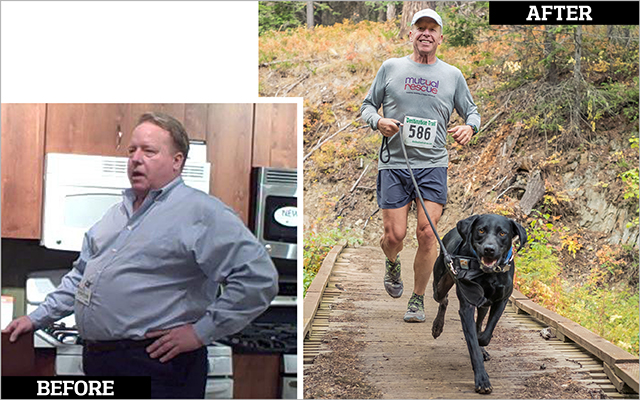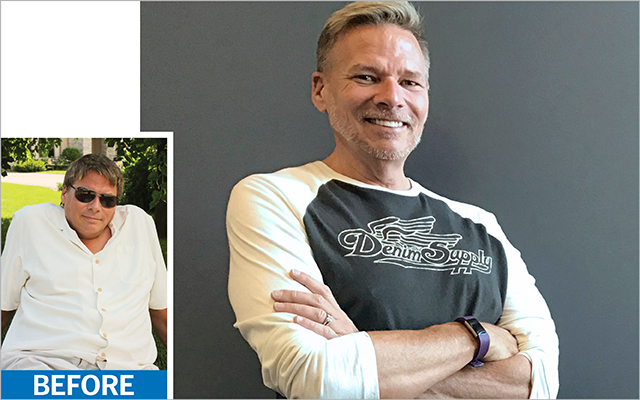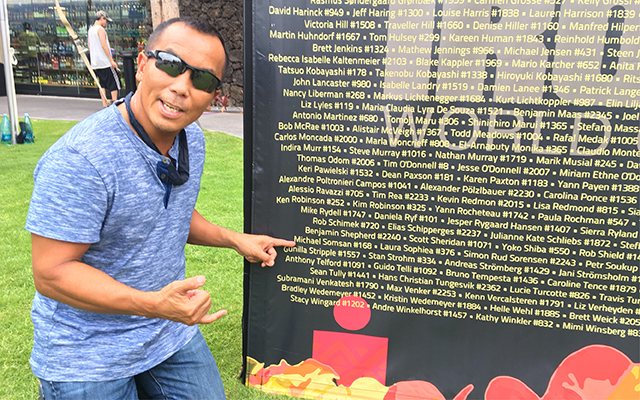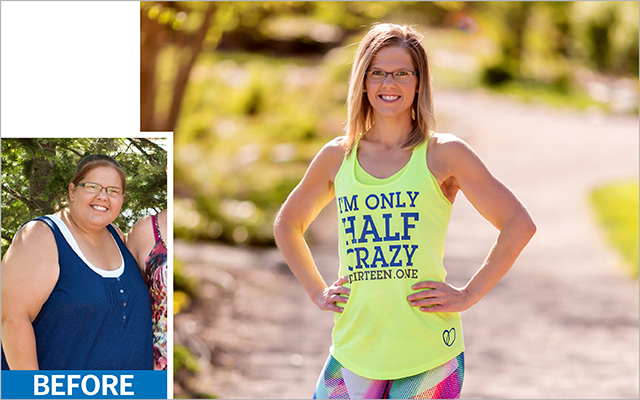For most of my life, I’d wanted to make myself invisible — which isn’t easy when you’re morbidly obese. Being large was all I had ever known. I was heavyset in my 20s, and then obese in my 30s. By the time I turned 50, my doctor told me I should buy a cemetery plot, because I wouldn’t live another five years.
I felt repulsive — and I knew I was in trouble. I stopped attempting to date or socialize. I didn’t want to go to the laundry center in my apartment complex; instead, I bought socks and underwear from Amazon every few weeks. As a salesman for an out-of-state manufacturer, I did most of my work over the phone and I avoided face-to-face meetings whenever I could.
For the most part, my meals were from the drive-through or delivery. I’d get two extra-large meat-lovers pizzas: one for that night, and one for the next day. That’s what I told myself. But I always ate both that night.
I tried dozens of diets, and I could lose 40 pounds on any program. But then I would start to crave pizza or cheeseburgers, and I’d gain it all back — plus an extra 10 pounds.
I was paying more than a thousand dollars every month in copayments for medications to control type 2 diabetes, depression, high cholesterol, and insomnia — plus more pills to alleviate the side effects of the others. None of them made me feel any better about myself. My 5-foot-10-inch frame was carrying 340 pounds. The larger I grew, the more I withdrew from the world.
Food as Medicine
One day in 2010, I watched an interview with former President Bill Clinton, who had recently lost weight. His doctors had put him on a plant-based diet, which I had never heard of before. I realized I needed a physician who would stop throwing pills at my problems.
I searched online for naturopathic doctors who practiced near my home in Silicon Valley and found Preeti Kulkarni, ND; she could see me the next day.
Kulkarni showed me how to transform my pantry and refrigerator: more whole grains, leafy greens, and fruits, and fewer sugary snacks and pizza-delivery boxes. She gave me recipes and cooking tips, too.
I was surprised to learn that there are more than 20,000 species of edible plants on the planet, which meant my meals weren’t just lettuce and twigs. I made lasagnas, pizzas, Chinese food, and Thai dishes. I couldn’t believe that I was able to put a healthy twist on all the things I’d loved to eat before.
Best of all, I didn’t feel deprived; this approach allowed me to eat until I was satisfied, and I didn’t have cravings. Within a few months, I could taste more of the natural flavors in my food. My palate was changing, so I didn’t miss the salty, additive-filled stuff I’d once lived on.
Dog Days
Kulkarni promised to help wean me from all my medications, but she had one prescription to add: Go to the animal shelter and adopt a dog.
I had never owned a dog before, and it seemed like a big responsibility. But since my new diet was going so well, I was resolved to do exactly what Kulkarni told me. I felt like her plan was my last chance at a new life.
I called Humane Society Silicon Valley and requested an overweight, middle-aged dog. I wanted us to have something in common. That’s how I found Peety. He was 7 years old, a border-collie mix on the shortlist for euthanasia.
In retrospect, I realize Kulkarni’s prescription was addressing the cause of my problems. I didn’t need more pills; I needed something that would force me to get outside and cross paths with other people.
At first, Peety and I only made it a few steps from our apartment. Even this raised my heartbeat and made my knees hurt and my lungs burn. Peety was dragging, too, but soon we had progressed to walking for a half hour. Eventually, we were taking two half-hour walks each day.
Those daily walks were the first steps I took toward becoming the person I am today. Between my new diet and increased activity, I began losing about 5 pounds a week. Peety was losing weight, too, and becoming perkier and more energized.
New Ambitions
In 10 months, I lost 150 pounds — and Peety lost 25. I was sleeping better; I no longer needed my insomnia medication or anti-depressants. I was also able to stop taking insulin under Kulkarni’s supervision.
My life went from a daily grind of physical misery to one of improved energy and mental clarity. My joint pain disappeared. I started to realize what normal felt like.
At one of my final appointments with Kulkarni in 2011, she suggested I find a new form of exercise with a social component, so I could be around more healthy, active people.
Later that week I connected with a running meet-up group. I was slow at first, but before long I signed up for my first race. Three months later, I ran a half-marathon. I have since completed more than 30 marathons.
My life rebounded in ways I couldn’t have imagined. I took vegan cooking classes and hosted dinner parties for my running pals. In 2016 I reconnected with my high school sweetheart; a year later, we were married.
I owe everything to Peety. He saved me. When he died in 2015, Humane Society Silicon Valley featured our story for their Mutual Rescue program. I felt the video was a tribute to Peety, but our story resonated with so many people that a publisher approached me about writing a book. Walking With Peety: The Dog Who Saved My Life came out in October 2017.
A few months after Peety died, I realized I wanted another dog in my life. So I went back to the Humane Society and found Jake, a young Labrador retriever who had come to the shelter only hours earlier. Lucky for me, Jake has picked up where Peety left off.
Eric’s Top 3 Success Strategies
1. Switching to a plant-based diet helped Eric reframe his approach to eating and conquer his cravings. “Once you realize how delicious vegetables and fruits can be, you won’t miss the drive-through!” he says.
2. Eric thinks everyone would benefit from the unconditional love of a shelter dog. “In Peety’s eyes, I was the greatest person in the world,” he says. “I felt inspired to become the man he thought I was.”
3. Meeting up with a running group gave Eric an outlet for his newfound energy and motivated him to set new goals. Plus, he was able to connect with other people who wanted to pursue a healthy lifestyle.




This Post Has 0 Comments